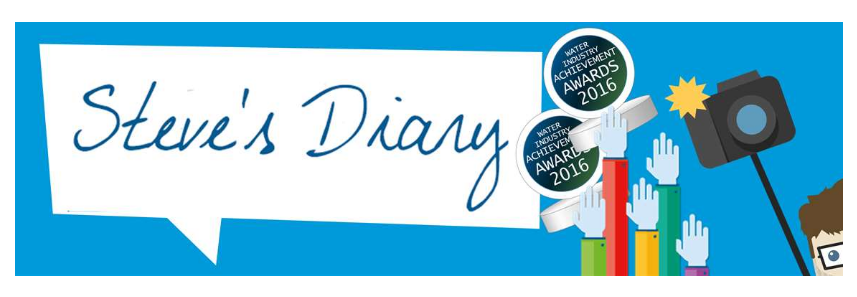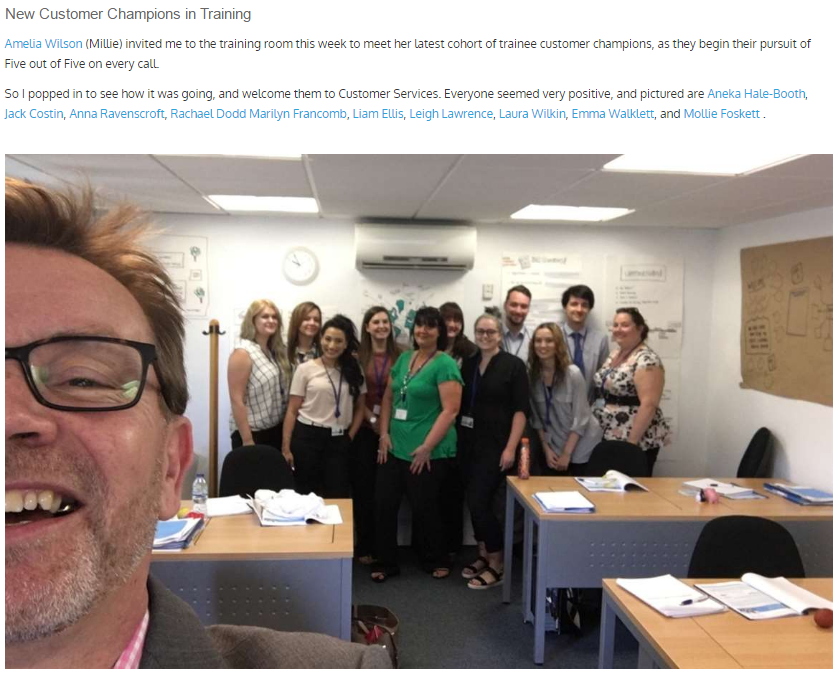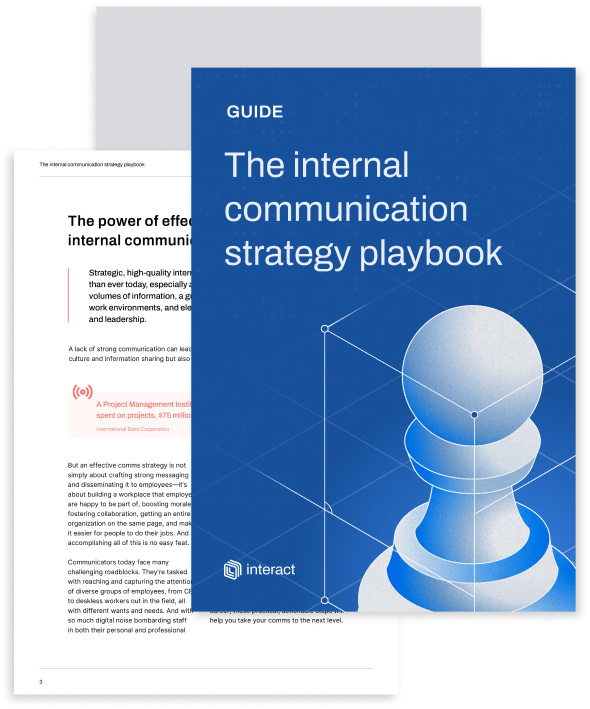Overcoming the fear factor: harnessing the potential of employee-generated content

User-generated content and influencer marketing now rule supreme in the consumer market: a staggering 92% of us trust content from friends, colleagues, and family above all other forms of brand messages. But when it comes to using our own staff as content generators, we’re still reluctant to pass the baton. Why – and how – should we be getting employees creating and sharing content?
Thanks to the digital transformation era and social media, user-generated content (UGC) is BIG news.
Consumers are more likely to trust, engage with, share, and purchase as a result of content created by on-the-ground users or experts, rather than the brand itself. In fact, company experts are trusted 66 percent of the time, compared to just 47 percent of global citizens trusting corporate advertising. Leaders and logos are out: our peers are in.

While significant investment has gone into facilitating and encouraging user-generated content – whether that be through review functionality, case studies, customer loyalty programs that recognize user ‘influencers’ and more – many organizations are overlooking their most valuable grass-roots experts: their employees.
Employee-generated content (EGC) is a variant of user-generated content, with one big difference: they’re your company experts. They know your business, brand and product; they’re your trusted insiders and the rewards of tapping into that will span both internal and external.
Leaders and logos are out: our peers are in.
However. The very words, ‘employee-generated content’ can strike fear in the hearts of any communicator or senior leader.
Can we trust our employees? Will they create poorly written, inaccurate or negative content? Will they skew our values or positioning, paint us in a bad light? Give away privileged internal information? If they share content internally, will it be perceived as unprofessional, time-wasting, irrelevant?
For the risk-adverse, controlling what comms come out with our brand attached is the logical solution. But the reality is, our staff are already talking about us: 98% of employees use at least one social media site for personal use, of which 50% are already posting about their company. Employee-generated content is already happening, whether we like it or not.
Isn’t it time we got onboard and ensure our staff have the means and tools to do it right, rather than attempting to hold back the tidal wave?
Free ebook – 14 steps to great internal communication
The value of employee-generated content (EGC)
For those still on the fence about the prospect of using our employees as grass-root marketers – both internally, and externally – let’s do a quick refresher on why this form of content and advocacy is so powerful.
- Credibility and trust: as consumers, we’ve wised up to the many ways in which corporations attempt to buy our attention. There is a growing mistrust of big brands and their agenda when it comes to marketing. By contrast, we tend to trust our peers, family, friends – they’re sharing or creating content of their own free will, not at the instruction of someone else.
- Relevancy: We crave connection, as human beings; so, when content comes from the people we know, it resonates and feels more relevant to us. It’s easier to connect with an individual, than a faceless brand.

- Storytelling: when creating content, people tend to bring otherwise flat ideas to life through storytelling. A blog that describes how a new running watch helped motivate me to pull my trainers on for the first time and eventually train for a half marathon is far more likely to be engaged with than a website page detailing the technical features of said watch, for example.
- Empowerment: when staff are given trust and autonomy to use their experience and create content, it empowers them with a voice. Employee-generated content is shown to have a positive impact on their experience and opinion of work, creating the right environment for greater engagement.
- Employer branding: even if the content isn’t about what it’s like to work for your organization, the experience of seeing staff advocating for their organization is a powerful tool to boost your recruitment strategy and employer brand.
- Ripple effect: when one employee writes or shares a piece of content, we tend to see a ripple effect: it shows other staff members that this is acceptable practice and encourages them to do the same.
- Break down siloes: when an employee shares an experience, story, or insight internally on a company-wide platform – whether your intranet, company newsletter, or ESN – it gives others outside of their immediate department or office a sneak peek into their role. By breaking down those silo barriers, they encourage greater collaboration and idea sharing.
- Culture: company cultures aren’t something we can mandate; they grow organically and are brought into being by our employees. Empowering staff with a voice that is trusted both inside and outside of the organization helps foster and nurture that culture, giving our employees the ability to share the company values and mission in their own way.

With topics such as employee engagement, employee experience, employer branding and the relationship between those and the customer experience hot on the management agenda, the value of EGC shouldn’t be underestimated. It may be difficult to measure or attribute direct financial success to, but there’s no disputing the positive impact it can have for employee, consumer, and business.
Free ebook – 14 steps to great internal communication
How do I get my employees contributing content – without risking my brand?
We get the why; but if you have an office of reluctant contributors, how do you get them advocating for your business ? And if your C-suite is shying away from the risk, how do you encourage EGC in a way that minimizes any potential negative outcomes?
- Give employees the right tools and support
Your employees won’t create and share content if they don’t know how.
Ensure your staff have easy access to your communication channels or a process through which they can submit content; whether that’s the right permissions to blog on your company intranet, or a submission email address for pieces to go on your website.

Consider doing some in-house training or workshops on the Do’s and Don’ts of creating great content people will engage with, and the technicalities of how to upload, post, or share it as applicable. Some simple ‘How To’ guides or top tips, hosted somewhere that’s easy to find, can also help get staff started.
- Give them the right information and content
If staff are going to be creating or sharing content within or on behalf of your business, make sure you’re giving them easy access to all the correct building blocks.
This includes brand materials such as your logo or corporate imagery, any essential information or key facts about the organization and its products, campaigns, values and policies, and a way to connect with internal experts should they have any questions or need support.
To a front-line member of staff sharing a post about your latest marketing campaign, it may not seem overly important to fuss over the details: but if that post goes live with a skewed logo, the wrong campaign slogan and a link to the wrong product, only to then be shared dozens or even hundreds of times, it has an impact.
- Make it easy
If the idea of staff creating their own social posts from scratch is too terrifying to contemplate, make it as seamless and easy as possible for them to share your company-created content.

This includes having easy ‘share’ buttons on your website content, alerting staff internally on your intranet when there’s fresh campaigns or exciting content that they might want to promote, or inviting staff to like and follow your social media profiles so they see updates when scrolling in their own time.
Employees can increase the social reach of a top brand by 4000%.
Hootsuite
If you’re looking for staff to create or share content for a particular purpose – for example, to promote your employer brand, or for a particular event or marketing campaign – create a mini internal campaign around it. Assign a #tag, make staff aware through internal promotion, share examples of what others have posted. Adobe do this particularly well with their #Adobelife hashtag, which encourages staff to share their experiences working for the organization: building their employer brand from the ground-up.
- Set out clear guidelines and acceptable best practice
If you’re concerned staff will bring down your brand with their creativity, it may help to spell out where the boundaries lie.
We’d steer clear of creating a 10-page mandate of rules; you’ll only deter would-be contributors by making the process too restrictive. Let’s not forget, the overwhelming majority of your staff already use social media platforms on a regular basis and will have an understanding of what’s acceptable or not. It’s also in their best interests to keep it clean if they want to keep their job.
However, depending on your culture and industry, you may want to reiterate which topics to steer clear of; any language considered unacceptable; and basic elements such as word count or length, use of external content such as images or videos and how to properly attribute them, and any guidance on using company-owned content or collateral, including your branding.
- Have an approval process
We can’t expect to veto and approve every tweet or Facebook post that goes out with our name against it; but if leadership hold reservations about more ‘meaty’ pieces of content going public without an official nod, creating a sign-off and approval process may be the answer.
Internally, this may come in the form of permissions settings to restrict who can post content to your intranet and where, or to add an approval process from a line manager or elected member of staff when particular types of content – for example, pages that will be seen company-wide – are published.
Externally, this principle can be applied to content coming from your ‘official’ channels including your company social media feeds or website.
Free ebook – 14 steps to great internal communication
- Lead by example
Even in today’s digital age and from behind the security of a keyboard, there’s still something very exposing about ‘putting yourself out there’ when sharing a story, experience, or opinion. This is particularly the case when sharing to your colleagues and peers.

Internal communicators continue to face this struggle: we know storytelling works, but what do we do when no-one is willing to step up and tell theirs?
Interact customer Midland Heart took on the challenge of staff apprehension with an award-winning campaign, recognized for a Judges’ Award for Innovation in our 2019 awards. The key for them was leading by example.
We were on a mission to find a way to make blogging more appealing to our colleagues. We wanted to reduce the sense of trepidation about putting their face to their words and highlight the benefits of blogging: building a stronger personal brand, sparking collaboration and influencing peers (to name a few).
Mark Brookes – Marketing and Comms Delivery Manager at Midland Heart
Two members of the Equality and Diversity Programme Board volunteered to share highly personal blogs during awareness campaigns. The first, an executive director, talked about his experiences in life and work as a gay man. The second came from a high-profile manager, who shared her battle with mental health and the role her manager and team played in the recovery process.

Using the intranet blog as a platform, these two stakeholders challenged preconceptions and harnessed the power of storytelling to raise awareness throughout the organization.
The inspirational courage shown by these senior leaders was a turning point for Midland Heart. Both blogs gained huge support from across the organization, breaking down barriers and setting new engagement highs, with likes and comments growing at a rate never seen before.
A year on since initiating its campaign to drive greater levels of blogging throughout the organization, Midland Heart has seen the number of active contributors increase by 230%.
Free ebook – 14 steps to great internal communication
- Identify and support your internal influencers
Influencer marketing works: and there’s no reason why this shouldn’t be the case internally also.
If you have members of staff who are already advocating for your organization or creating and sharing content, empower them to be full-blown employee content generators.
This may come in the form of increased permission rights to publish more content freely; support training or guidance on posting web-friendly content; making them a ‘go-to’ when there’s a particular campaign or cause you need employee advocacy behind; or even sending your champion on the road to encourage others to follow suit.
- Open the door to different content types
Not every employee is a natural writer. In today’s digital age, content can – and should! – come in a diverse range of formats.
Tap into the skillset residing among your employees and encourage contributions in the form of photographs, videos/vlogs, even artwork, animation or music, depending on your team.
This can also help motivate more senior members of staff, who may struggle for time when it comes to creating content, to contribute.
We love this creative approach taken by Steve, Customer Service Director at South East Water. He had previously blogged weekly to a readership of around 30%+ of employees, but this was taking him between 1 – 2 hours each week. Switching to utilize the power of the selfie, Steve now takes a picture with the teams he meets and tags them in the picture with a short explanation. He saves valuable time, and readership has risen to above 60%.


Employee-generated content may sound like a terrifying prospect, and particularly for those industries that are highly regulated, publicly owned, or operating in sectors likely to see media attention. It doesn’t need to be. With the right support and input from an organization, employees can serve as a powerful tool to promote your brand and culture, both internally and externally.

